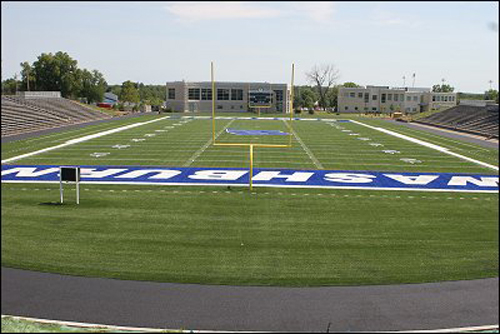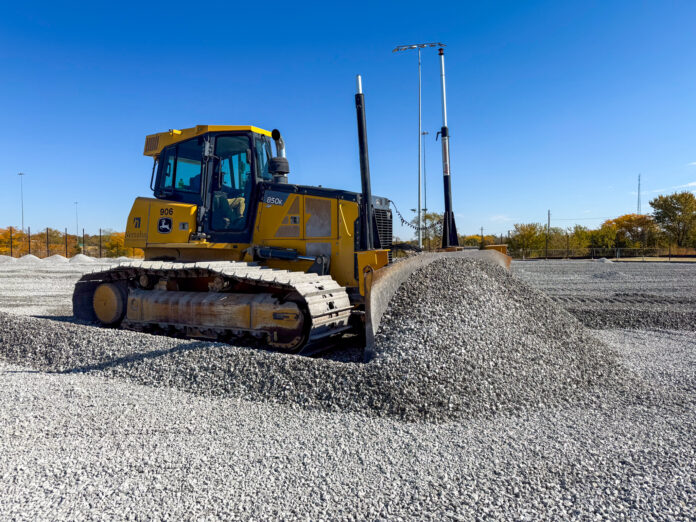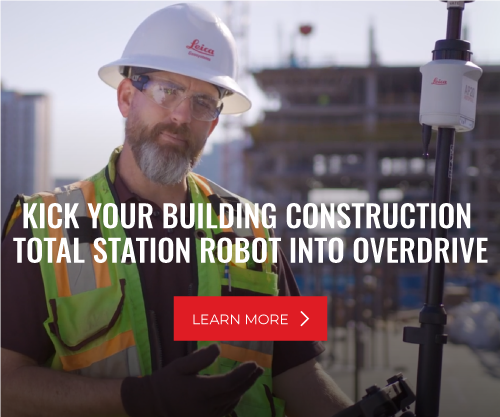Sustainability is a key priority for schools, universities, and governments investing in new or revamped athletic fields and courts. Contractors like Nemaha Sports Construction, based in Lincoln, NE, are using the latest technology to help meet their sustainability goals while controlling costs.
“Our approach at Nemaha Sports Construction focuses on optimizing material use—ensuring we apply the right amount of aggregate, concrete, and asphalt while minimizing waste,” says President Jeff Emanual. “This reduces environmental impact and unnecessary transportation emissions, while also lowering costs for the owner by minimizing material waste.”
“When earthwork, stabilization, and aggregate placement are executed correctly from the start, we create a long-lasting substrate that minimizes the need for major reconstruction. This means that when synthetic turf replacement is necessary, only minor updates are required, extending the facility’s lifespan and improving cost efficiency.”
—Jeff Emanual, President, Nemaha Sports Construction
A crucial part of the company’s sustainability strategy is building durable, high-performance substrates for synthetic turf, concrete, and asphalt tracks. “When earthwork, stabilization, and aggregate placement are executed correctly from the start, we create a long-lasting substrate that minimizes the need for major reconstruction,” says Emanual. “This means that when synthetic turf replacement is necessary, only minor updates are required, extending the facility’s lifespan and improving cost efficiency.”
Loren Ferré, director of Athletics at Washburn University, has seen firsthand how a well-constructed field saves money. The first field Nemaha installed for the school lasted 11 seasons—longer than anticipated. “When we decided it was time to replace our football/soccer synthetic turf, the old turf was removed, and the subsurface installed by Nemaha was perfect. We had planned for some cost to fix the subsurface, but none was needed. This was another win for us.”

Improving Efficiency and Reducing Waste
Nemaha uses engineer-provided plans and detailed 3D site models to guide its work. They have partnered with Leica Geosystems for total stations and machine control technology since 2016.
“The technology allows us to optimize grading, reduce material waste, and streamline construction processes,” says Emanual. “By ensuring accurate placement and minimizing unnecessary excavation, 3D mapping enhances overall project execution and compliance with specifications.”
The combined use of Leica total stations and machine control technology—which Nemaha calls “TSMC grading” —allows the company to grade with high precision, ensuring materials such as aggregate, asphalt, and concrete are applied only as necessary. This not only reduces environmental impact but also lowers costs by minimizing material waste and unnecessary hauling.
Reducing Fuel Usage with Precision Grading Technology
With Leica’s total station and machine control technology, jobs are completed right the first time.
“By utilizing Leica total station machine control guided equipment and skilled operators, we have significantly reduced fuel usage across our projects,” says Nemaha’s superintendent Scott Johns. “The precision of TSMC grading eliminates unnecessary rework, meaning fewer passes over the same area, leading to substantial fuel savings.”
According to Johns, Nemaha also benefits from reduced man-hours and fewer hours running the equipment. This equates to reduced wear and tear on machines, leading to lower maintenance and repair costs.
Taking a Long-Term View on Project Costs
Sometimes, the most sustainable options aren’t the least expensive initially. Nemaha helps clients compare options and determine what best meets their needs. “Evaluating costs over a project’s lifespan provides a more accurate picture of long-term value, rather than just upfront expenses,” says Emanual.
This is especially true when clients are deciding between post-tensioned concrete running tracks and asphalt tracks. “Asphalt tracks have a lower initial cost but require more frequent maintenance and replacement, depending on climate and soils,” explains Emanual. “Post-tensioned concrete tracks, on the other hand, last 2.5 times longer than asphalt tracks, significantly reducing maintenance and replacement costs.”
Post-tensioned concrete also allows for thinner slabs while maintaining strength and durability. The continuous tension applied to the slab keeps it in compression and prevents cracks from forming.
With technology on their side, Nemaha has found that building sustainable athletic facilities is not only a win for the environment, but also a win for clients and themselves.
To speak with a heavy construction expert who can guide you on your technology journey, contact us.






